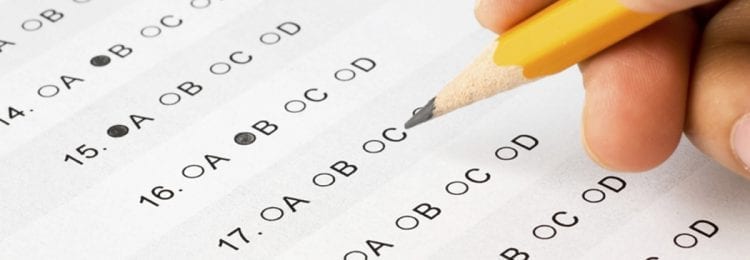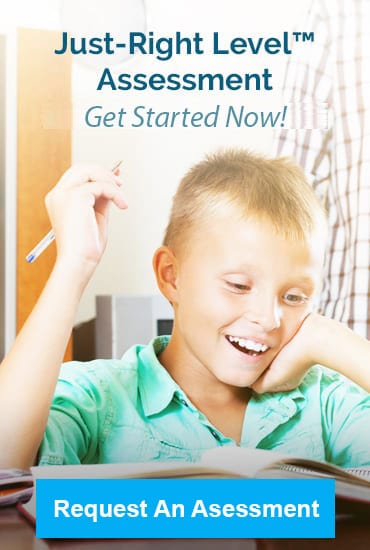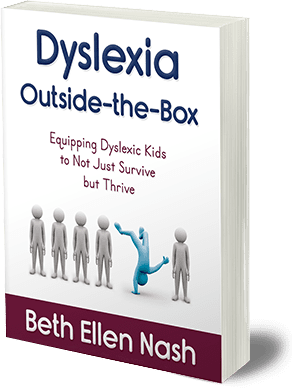Is there a test for dyslexia?

While there is no one simple test for dyslexia, the following are common characteristics found in many dyslexics:
Early warning signs in young children:
- Delayed language development / mild speech delays
- Difficulty learning alphabet, possibly also numbers and colors
- Difficulty rhyming words
- Difficulty with multiple part directions
- Reversing letters and words in reading and writing such as:
– Reversing letters: “from” instead of “form”
– Reversing words: “was” instead of “saw”
– Flipping letters left to right and top to bottom: b instead of d and p instead of q
Common warning signs of dyslexia in school age children:
- Learning to read is a struggle, slower to learn to read than age-mates
- Difficulty sounding out words
- Doesn’t show interest in reading
- Reads very slowly
- Switches order of letters, leaves out letters, or adds extra letters when writing or reading (or possibly also in speaking)
- Mixing up similar words
- Uses filler words in speech, rather than precise words
- Difficulty with spelling
- Difficulty expressing ideas in writing
- Confuses left and right
- Difficulty distinguishing small differences in sounds and words
- Difficulty with memorization (such as math facts)
- Difficulty with lots of the little words (such as and, the, said, of, from)
- Often comprehension is better than expected, especially when the student has read silently
Dyslexics may be particularly good with:
- Art, dance, sports, building things
- Creative
- Intuitive
- Quickly synthesizes new data, and views the “scene” from many different angles and perspectives
- Thinks in pictures, creating an ongoing 3-D movie of connected images in the mind
- Strength with visual-spatial features including shape, size, motion, position, and orientation of physical objects.
- Sees the big picture
- Sees from multiple perspectives
- Brings information, processes, and strategies from different disciplines to bear on an issue
- Sees similarities, associations, correlations, and cause and effect between ideas, objects, concepts, and points of view
- Makes connections
- Discerns patterns and trends in the real world
- Quick mental processing, much slower verbal processing
- Predicts likely outcomes, even with limited information, by playing out many possibilities and scenarios in their head
In the Genes
Dyslexia runs in families. So, if many of the characteristics on the informal test for dyslexia above apply to your child, consider if anyone in the parent or grandparent generation or siblings or cousins also struggled with school. Dyslexia was often not recognized in the past. Someone who struggled with reading, writing, or other aspects of school, likely passed on the genes associated with dyslexia. Also consider if that relative has many of the strengths noted above as common in dyslexics.
There’s a saying that goes, “The apple doesn’t fall far from the tree.” It is very common to find a family member with similar struggles and strengths. According to a study by the Dyslexia Research Trust, at least three genes are linked to dyslexia and “at least ten genetic factors are thought to be involved.” Similarly, researchers at the Yale School of Medicine found three genes that predispose individuals to dyslexia and other language impairments. Which genes are involved in any one person gives rise to the variation in how it affects them. If there is one “apple” in the family, it’s likely there are more.
Stealth dyslexics
“Falling from the same tree” can give the dyslexic child hidden talents. Consider Uncle Stan, who didn’t have much time for reading but was a skilled artist with a blowtorch. Or the career of Cousin Samantha, who was slow to read, slow to write, but finished her engineering degree in material science. Shouldn’t your nephew Josh be admired for his precocious ability to pilot an airplane before the age of 14 even though he can’t spell simple sight words or sign his name in cursive? Relatives, siblings, and ancestors who display visual-spatial, mechanical, or technical aspects of thinking are likely the same ones challenged by reading, writing, and arithmetic. In some relatives you might see only the strengths of dyslexia and no particular challenges. Sometimes called stealth dyslexics, such people are smart enough to hide their challenges or come up with creative workarounds to overcome them.
Early Intervention – Always a Winner
Early intervention prevents unnecessary learning struggles. It minimizes feelings of shame and inadequacy. If there is a family history of dyslexia or other learning challenges, don’t assume that your child will “grow out of it.”
The informal assessments we offer at Wings to Soar are adequate for finding the “just-right level” that your student needs and for starting intervention. We cannot offer a test for dyslexia or diagnosis. In many cases we can help a student get caught up to their age-level skills in one or two years for less than what a formal diagnosis costs. Often the best approach is to use existing financial resources for intensive early intervention, as if the student were dyslexic.
If your student is not responding well to early intervention after six months despite spending the time according to the protocol for that intervention, it would be wise to seek a formal diagnosis to find out if the learning challenge involves other layers of complexity. Addressing the issues early with the help of appropriate professionals minimizes frustrations and damage to the student’s self-esteem.
Formal diagnosis can qualify for accommodations or services
Choosing to seek a formal diagnosis of dyslexia should be guided by whether or not your student can qualify for accommodations and/or services that might be recommended as a result of that diagnosis. Accommodations are educational strategies and supports that even the playing field for students with dyslexia and other learning challenges.
If your student needs accommodations to level the playing field on high-stakes tests, then it may be important to get an official diagnosis. If a formal diagnosis is provided when the student is in elementary school, middle school, or early high school, another one will have to be obtained within three years of college entrance to qualify for accommodations at that time.
Formal test for dyslexia
Before pursuing more formal testing, I recommend reading The Mislabeled Child by Brock and Fernette Eide, M.D.s to help you identify which professionals to seek assessment from and what your specific concerns are so they can assess everything relevant to your concerns. Do make sure that your assessor is trained to recognize dyslexia.
A formal battery of assessments to test for dyslexia should include thorough background information from the parents. Oral language, word recognition, decoding (sounding out words), spelling, phonological processing, automaticity and fluency of skills, reading comprehension, and vocabulary knowledge should be assessed. It may also include intelligence testing to look for patterns of strengths and weaknesses as well as significant discrepancies between subtests. Such a battery of assessments is needed to test for dyslexia as there is no one specific test for dyslexia.
You should expect to receive a written report within a few weeks of testing that thoroughly reports the results of all tests administered, provides a diagnosis, and suggestions for accommodations and intervention. If appropriate, ask to have accommodations such as extended time on tests, testing in a quiet room, a reader for non-reading portions of tests, a scribe and/or any other recommended accommodations are written into the formal report as this will make it easier to provide documentation to qualify for services or accommodations if needed in the future.
You are the expert on your child. Listen to your instincts on whether or not you decide to test for dyslexia right away or start with early intervention.
Get started with Just-Right Level Assessments
While we do not provide a formal test for dyslexia, Wings to Soar Online Academy can help you get started with Just-Right Level™ placement assessments. These will identify your child’s skill gaps in phonemic awareness, phonics, reading comprehension, reading fluency, vocabulary, spelling, writing, and math. Our Intervention Specialist will use the results of these Just-Right Level™ Assessments to create a Path to Success™ Personalized Learning Plan for your child.


